Stunning Madaba Map: Oldest Known Mosaic Built Of Two Million Stone Cubes
A. Sutherland - AncientPages.com - The map of Madaba is the oldest known and existing geographic floor mosaic map of the Holy Lands in art history.
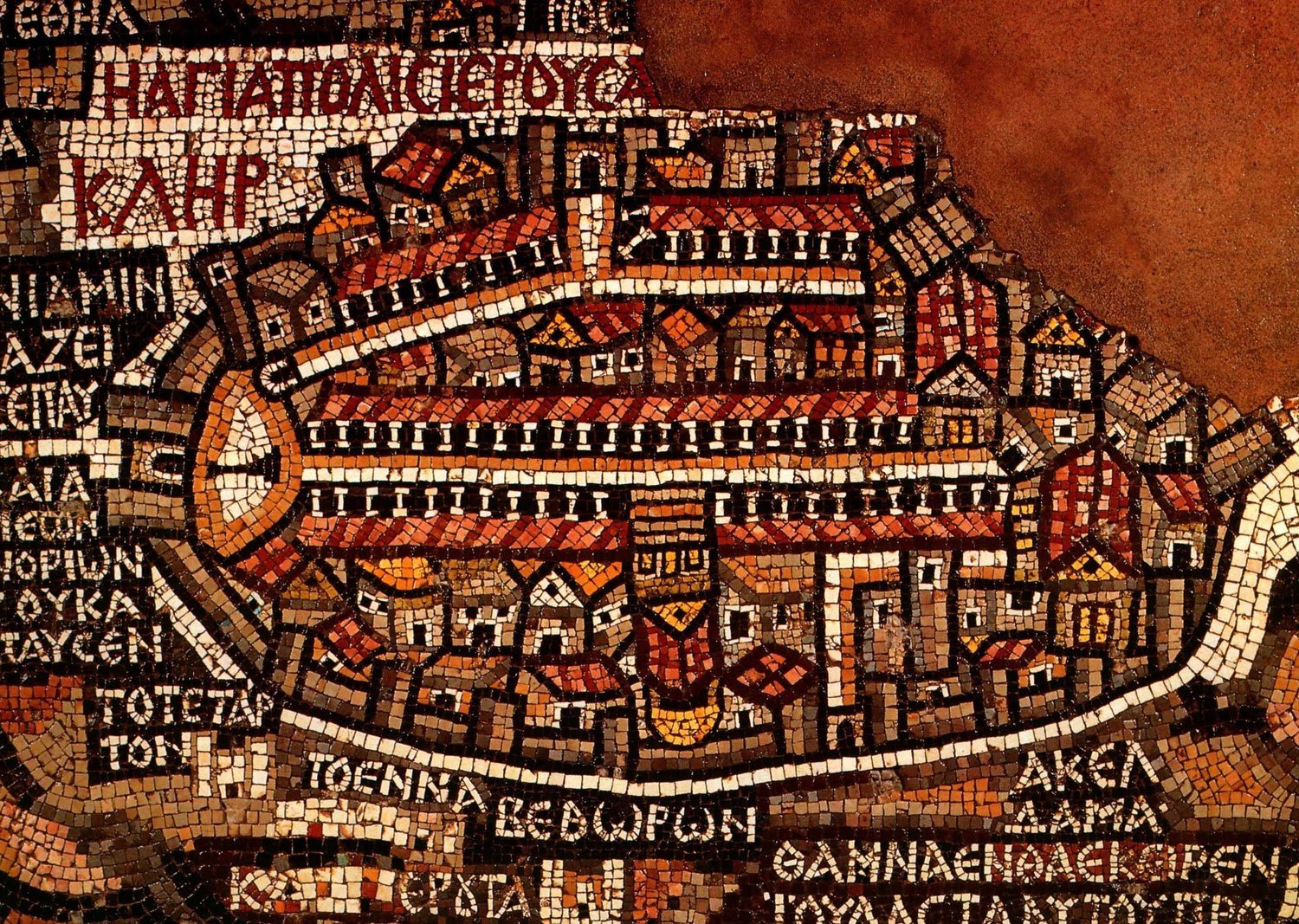 The fragment that depicts Jerusalem. Walls are visible around the big cities, including Jerusalem, Jericho, and Ashdod. Jerusalem is the focus of the map. The Madaba Map Centenary, 1897-1997 - Unknown author - Public Domain
The fragment that depicts Jerusalem. Walls are visible around the big cities, including Jerusalem, Jericho, and Ashdod. Jerusalem is the focus of the map. The Madaba Map Centenary, 1897-1997 - Unknown author - Public Domain
This beautiful and colorful work of ancient artists (or perhaps cartographers) who had both skills and biblical knowledge shows very accurate locations of the area, from Tyre in the north to the Egyptian Delta in the south, with all mountains, rivers, and the major cities.
The map that was created between 542 and 570 covers the floor of the Basilica of St. George in the city of Madaba ("the city of mosaics") in Jordan, about 15 miles southeast of the northern part of the Dead Sea.
The history of Madaba (mentioned in the Bible and on the Mesha Stele) goes back thousands of years. The first settlements in the area formed there in the 4th millennium BC. At the time of the Exodus and conquest, 1406 BC, Madaba, and Mt. Nebo were part of the territory of Moab. (Isa 15:2; Num 36:1; Deut 32:49.)
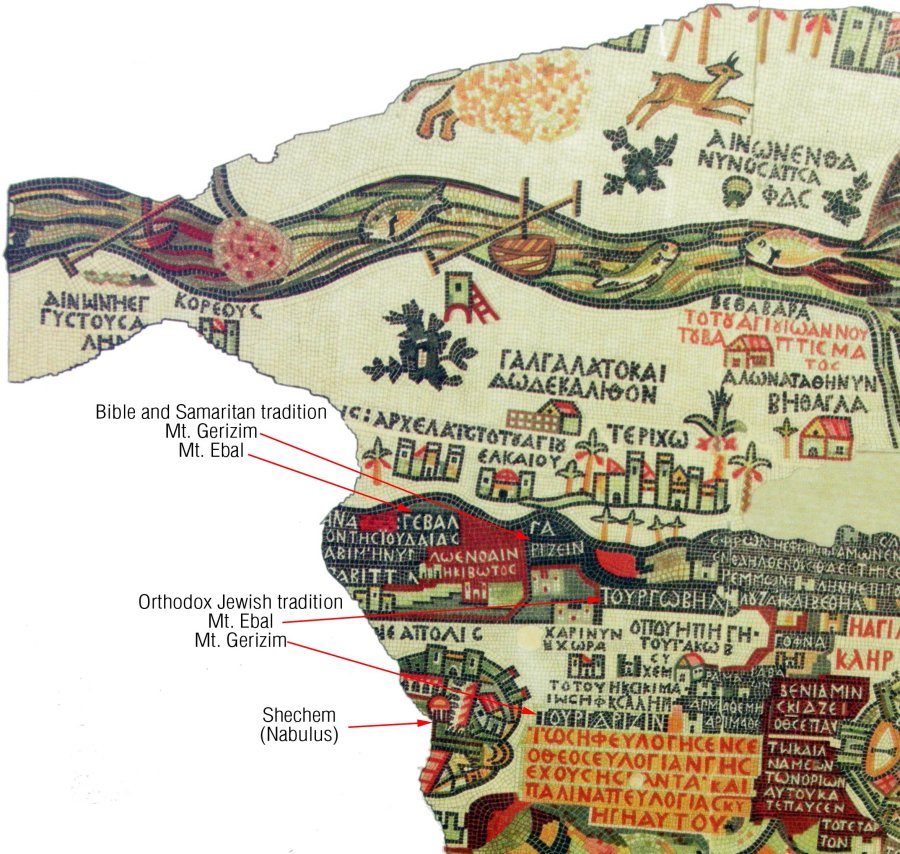 Madaba Map of Biblical Lands. Image credit: Bible ca.
Madaba Map of Biblical Lands. Image credit: Bible ca.
Taken by the Amorite king Sihon, which happened shortly before Joshua's conquest of Canaan, the Israelites passed through, took the city of Madaba, and conquered Sihon.
According to 1 Maccabees 9:32-42, Madaba was inhabited by a Nabataean tribe, the sons of Jambri, in the 2nd century BC.
Madaba had a long and turbulent history of being constantly captured by one enemy and passed back and forth from one conqueror to another.
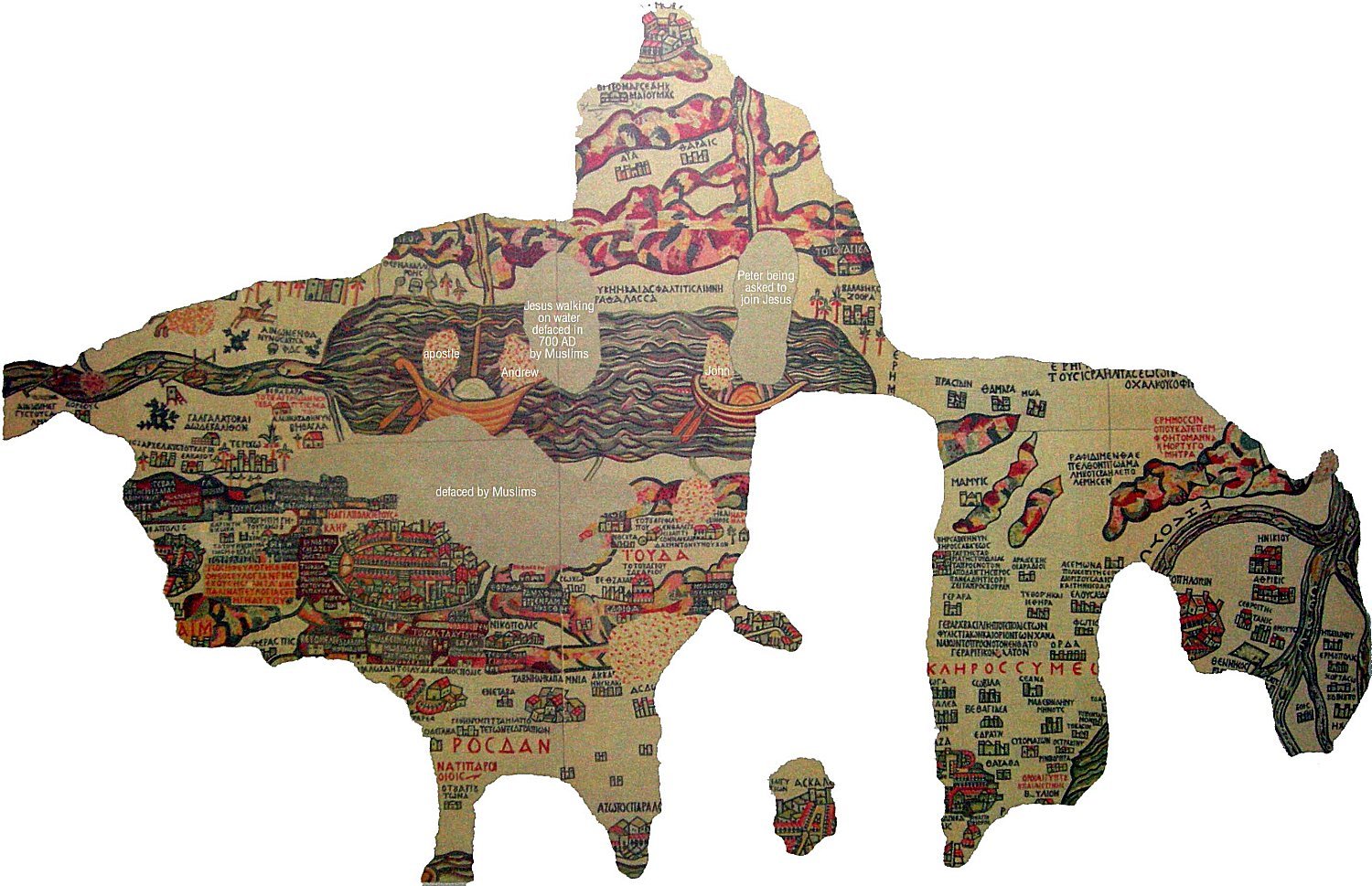 Madaba Map is considered by some scholars to be the best topographic representation ever done before modern cartography. Image credit: bible.ca
Madaba Map is considered by some scholars to be the best topographic representation ever done before modern cartography. Image credit: bible.ca
The map was initially created during the reign of emperor Justinian, 527-565 AD. It was formed of 2 million colored cubes and measured about 51 feet x 19.5 feet (15.5 m x 6 m).
The present remains of the map are composed of 750,000 cubes measuring 34.5 feet x 16.5 feet (10.5 m x 5 m and 150 Greek inscriptions in various sizes.
The most detailed element of the topographic depiction is Jerusalem, located at the center of the map. The anonymous artist accurately portrayed the old buildings of Jerusalem's Old Town, its gates, and some facilities, such as the Basilica of the Holy Sepulcher, Gethsemane, and the Citadel of David.
 Madaba Mosaic Map on the floor of the Basilica of St. George in the "city of of mosaics” in Jordan. Image credit: Visitpalestine.ps
Madaba Mosaic Map on the floor of the Basilica of St. George in the "city of of mosaics” in Jordan. Image credit: Visitpalestine.ps
Archaeological excavations conducted in 2010 further substantiated its accuracy with the discovery of a road depicted on the map that runs through the center of Jerusalem.
There are also clearly depictions of the Dead Sea, the bridges connecting the banks of the Jordan, river fish, and lions hunting gazelles on the Moab steppes, as well as cities, such as the Jericho palms and sacred places of Christians such as Bethlehem.
The mosaic was rediscovered in 1884 during the construction of a new Greek Orthodox church. In 1965-1966, the map was rediscovered and described by German archaeologists. All objects shown on the map are represented in Greek.
The unknown artists probably made the map for the Christian community of Madaba, which was the bishop's seat at that time. In 614, Madaba was conquered by the Sasanian Empire. In the eighth century, the ruling Muslim Umayyad Caliphate had some figural motifs removed from the mosaic.
Patriarch Nicodemus I of Jerusalem was informed about the incident, but no research was carried out until 1896 AD.
Unfortunately, large portions of the Madaba Map were damaged by fires and moisture effects that destroyed the art's quality. In 1965, major restoration works were undertaken to restore the remaining parts of the mosaic.
Written by – A. Sutherland - AncientPages.com Senior Staff Writer
Updated on September 29, 2022
Copyright © AncientPages.com All rights reserved. This material may not be published, broadcast, rewritten or redistributed in whole or part without the express written permission of AncientPages.com
Expand for referencesReferences:
Aa.Vv. The Mediterranean Medina: International Seminar
More From Ancient Pages
-
 Grave Of Amazon Warrior Who Lived In The Kingdom Of Urartu Discovered In Armenia
Archaeology | Nov 28, 2019
Grave Of Amazon Warrior Who Lived In The Kingdom Of Urartu Discovered In Armenia
Archaeology | Nov 28, 2019 -
 Madagascar Cave Art Hints At Ancient Connections Between Africa And Asia
Featured Stories | Dec 18, 2023
Madagascar Cave Art Hints At Ancient Connections Between Africa And Asia
Featured Stories | Dec 18, 2023 -
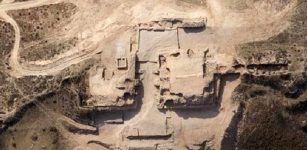 First Chinese Murals Unearthed In Shimao Ruins Are Over 4,000 Years Old
Archaeology | Aug 22, 2015
First Chinese Murals Unearthed In Shimao Ruins Are Over 4,000 Years Old
Archaeology | Aug 22, 2015 -
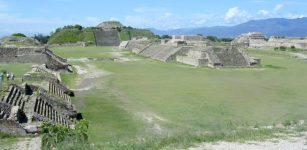 Ancient Mexican City Endured For Centuries Without Extremes In Wealth And Power
Archaeology | Mar 8, 2022
Ancient Mexican City Endured For Centuries Without Extremes In Wealth And Power
Archaeology | Mar 8, 2022 -
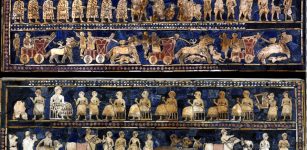 Image Of The Day: ‘The Standard of Ur – War And Peace’
Civilizations | Sep 7, 2015
Image Of The Day: ‘The Standard of Ur – War And Peace’
Civilizations | Sep 7, 2015 -
 Ashurbanipal – Last Great Ruler Of Assyria And His Famous Well-Organized Library
Featured Stories | Jun 21, 2021
Ashurbanipal – Last Great Ruler Of Assyria And His Famous Well-Organized Library
Featured Stories | Jun 21, 2021 -
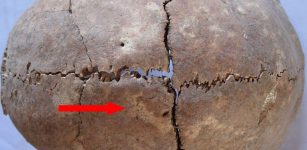 Physical Violence In Ancient Mesopotamia Much Less Common Than Ancient Texts Suggest – New Study
Archaeology | Mar 29, 2017
Physical Violence In Ancient Mesopotamia Much Less Common Than Ancient Texts Suggest – New Study
Archaeology | Mar 29, 2017 -
 Tartarus – The Land Of The Dead – Mysterious Underground World
Featured Stories | Sep 13, 2015
Tartarus – The Land Of The Dead – Mysterious Underground World
Featured Stories | Sep 13, 2015 -
 Mystery Of The Lost Biblical Kadesh Where Moses Was Punished By God
Biblical Mysteries | Oct 17, 2017
Mystery Of The Lost Biblical Kadesh Where Moses Was Punished By God
Biblical Mysteries | Oct 17, 2017 -
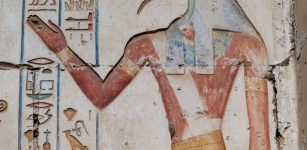 Thoth: Ancient Egypt’s Most Mysterious, Highly Venerated God Of Knowledge And Writing
Myths & Legends | May 24, 2017
Thoth: Ancient Egypt’s Most Mysterious, Highly Venerated God Of Knowledge And Writing
Myths & Legends | May 24, 2017 -
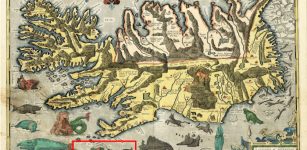 Ancient Manuscripts About Sea Monsters Solve An Ocean Mystery
News | Mar 1, 2023
Ancient Manuscripts About Sea Monsters Solve An Ocean Mystery
News | Mar 1, 2023 -
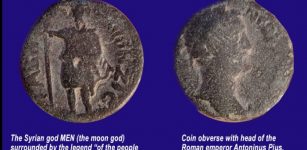 Unique 1800-Year-Old Roman Coin Unearthed On Southern Carmel
Artifacts | Mar 1, 2021
Unique 1800-Year-Old Roman Coin Unearthed On Southern Carmel
Artifacts | Mar 1, 2021 -
 Mysterious Hornet Spook Light In Missouri
Featured Stories | Jun 26, 2024
Mysterious Hornet Spook Light In Missouri
Featured Stories | Jun 26, 2024 -
 On This Day In History: Battle Of Lagos Took Place Between Royal Navy Of Britain and France – On August 19, 1759
News | Aug 19, 2016
On This Day In History: Battle Of Lagos Took Place Between Royal Navy Of Britain and France – On August 19, 1759
News | Aug 19, 2016 -
 Early Humans Used Fire To Make Stone Tool – New Study
Archaeology | Oct 16, 2020
Early Humans Used Fire To Make Stone Tool – New Study
Archaeology | Oct 16, 2020 -
 Giants Did Exist And Were A Part Of Earth’s Ancient History
Ancient Mysteries | Apr 29, 2014
Giants Did Exist And Were A Part Of Earth’s Ancient History
Ancient Mysteries | Apr 29, 2014 -
 Peculiar Ancient Ruins That Can Re-Write History Of Florida Found By Archaeologists
Featured Stories | Jul 28, 2024
Peculiar Ancient Ruins That Can Re-Write History Of Florida Found By Archaeologists
Featured Stories | Jul 28, 2024 -
 Is This The Face Of A 16th Century Pirate Or Criminal?
Archaeology | Jan 5, 2016
Is This The Face Of A 16th Century Pirate Or Criminal?
Archaeology | Jan 5, 2016 -
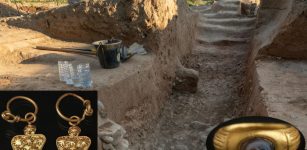 Magnificent Etruscan Underground Burial With Beautiful Artifacts Discovered In Aleria-Lamajone, France
Archaeology | May 13, 2022
Magnificent Etruscan Underground Burial With Beautiful Artifacts Discovered In Aleria-Lamajone, France
Archaeology | May 13, 2022 -
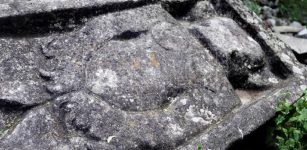 Pre-Hispanic Carved Stone Monuments Discovered On A Mountaintop In Puebla, Mexico
Archaeology | Jul 25, 2020
Pre-Hispanic Carved Stone Monuments Discovered On A Mountaintop In Puebla, Mexico
Archaeology | Jul 25, 2020
